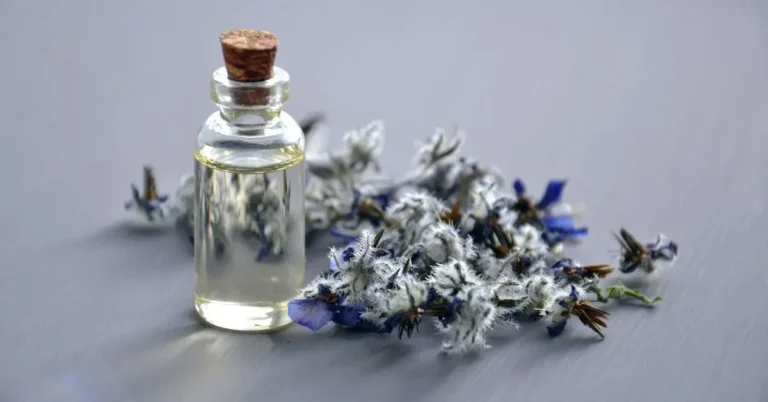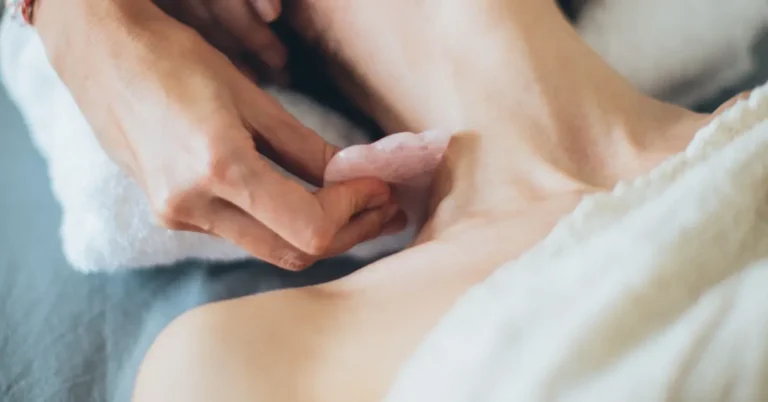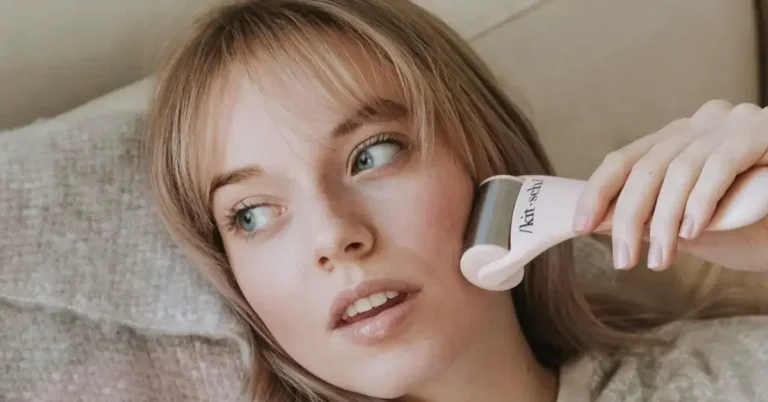Can Gua Sha Treat Acne? Welcome, esteemed readers. In this article, we will delve into the subject of gua sha and its potential benefits for acne management. Initially, let’s begin with some basic information.
Gua sha is a traditional Chinese medical treatment that involves scraping the skin with a massage tool to promote healing and alleviate various ailments. Its history can be traced back thousands of years, and it has been used to treat a wide range of conditions, including musculoskeletal pain, respiratory disorders, and even the common cold.
The topic of gua sha and acne is an important one, as many people struggle with acne and are always on the lookout for effective treatment options. So, without further ado, let us delve into the question at hand: does gua sha help with acne?
Table of Contents
Does Gua Sha Help with Acne?
The effectiveness of gua sha for treating acne is a topic of much debate in the skincare community. While some people swear by it as a miracle cure, others are skeptical of its purported benefits.
One potential benefit of gua sha for acne-prone skin is its ability to improve circulation and lymphatic flow. By increasing blood flow and promoting the drainage of toxins and waste products, gua sha may help to reduce inflammation and prevent clogged pores, which are two major contributing factors to acne.
Additionally, gua sha may help to smooth out the skin’s surface and reduce the appearance of scars and hyperpigmentation caused by acne. By gently scraping the skin with a gua sha tool, it is thought that the technique can break up adhesions and release tension in the facial muscles, resulting in a smoother, more even complexion.
no bs, gua sha seems to reduce my acne.
— jupiter jaeal (@jupiterlovee_) September 3, 2023
However, it is worth noting that there is a lack of clear evidence supporting gua sha’s effectiveness in treating acne. While some studies have suggested that gua sha may be beneficial for other conditions, such as chronic low back pain, there is little scientific research on its specific effects on acne.
Furthermore, I would recommend avoiding gua sha over active breakouts, as the scraping motion can potentially worsen inflammation and cause further irritation. Instead, it is best to use gentler techniques, such as facial massage or light pressure with a jade roller, to promote circulation and lymphatic drainage in the affected areas.
What is Gua Sha?
For those who are unfamiliar with gua sha, it is a traditional Chinese healing technique that involves scraping the skin with a massage tool. The tool is usually made of jade, rose quartz, or other similar materials, and is gently scraped across the skin in long, sweeping motions to promote healing and alleviate various ailments.
How Does Gua Sha Help the Skin?

When it comes to the potential benefits of gua sha for the skin, there are several ways in which this technique may be helpful. One of the main benefits is that gua sha can improve circulation and move congestion to the surface of the skin, which can help to clear out pores and reduce the appearance of acne.
By using a gua sha tool to gently scrape the skin, you can stimulate blood flow and lymphatic drainage, which can help to bring fresh oxygen and nutrients to the skin cells while removing waste and toxins. This can help to reduce inflammation and redness, while also promoting a healthy, radiant complexion.
I’m obsessed with using my gua sha, literally seeing my face get nice and slender
— kuhmil (@keepitamelee) September 30, 2023
In addition to its effects on circulation and lymphatic drainage, gua sha may also help to stimulate collagen production and improve skin elasticity. This can help to reduce the appearance of fine lines and wrinkles, while also promoting a more youthful, glowing complexion.
Overall, while the research on gua sha’s benefits for the skin is still limited, many people swear by this ancient technique as a natural way to promote healthy, clear, and radiant skin. However, it’s important to keep in mind that gua sha is not a miracle cure, and it may not work for everyone. If you’re considering trying gua sha for the first time, it’s a good idea to talk to a skincare professional to ensure that it’s safe and appropriate for your skin type and concerns.
5 Shocking Risks of Gua Sha for Acne-Prone Skin

Increased Risk of Breakouts
While gua sha can help to improve circulation and move congestion to the surface, it may also cause irritation and inflammation in acne-prone skin. The increased pressure applied during the gua sha technique can lead to micro-tears in the skin, making it easier for bacteria to enter and cause breakouts. If you have active breakouts or sensitive skin, I would recommend avoiding gua sha over those areas.
Risk of Scarring
Using a gua sha tool improperly or with too much pressure can cause scarring, especially if you have acne-prone skin. The tool may cause further damage to already inflamed areas, leaving scars that can be difficult to treat. It is important to use a light touch and the proper technique when performing gua sha to avoid this risk.
daily reminder that if you have acne you shouldn’t use gua sha and jade rollers!!
— diana (@puertenocte) September 24, 2022
Spread of Bacteria
If you are not careful, gua sha can spread bacteria from one area of the skin to another, leading to more breakouts. It is important to clean the tool thoroughly between uses and avoid using it on areas with active breakouts or open wounds.
Skin Sensitivity
Gua sha can be too harsh for some skin types, especially those with acne-prone skin. The pressure applied during the technique can cause irritation, redness, and sensitivity. If you have sensitive skin, it is best to consult with a skincare professional before trying gua sha.
Aggravation of Existing Conditions
Gua sha can exacerbate existing skin conditions, such as rosacea or eczema, which can be common in those with acne-prone skin. The pressure applied during the technique can cause further inflammation and irritation, leading to more discomfort and potential breakouts. If you have any existing skin conditions, it is important to consult with a healthcare provider before trying gua sha.
Overall, gua sha can be a beneficial practice for overall health and wellness, but it is important to understand the potential risks associated with this technique, especially for those with acne-prone skin. If you have concerns or questions about using gua sha for your skin type, it is always best to consult with a skincare professional or healthcare provider. Stay safe and healthy, dear readers!
What Are Some Other Ways to Treat Acne?

Now that we’ve explored the potential benefits and risks of gua sha for acne-prone skin, let’s take a look at some other treatment options that may be worth considering.
- Topical treatments: Over-the-counter topical treatments containing ingredients like benzoyl peroxide, salicylic acid, and retinoids can be effective in treating acne. These products work by unclogging pores, reducing inflammation, and preventing new breakouts from forming.
- Prescription medications: For more severe acne, prescription medications like antibiotics, oral contraceptives, and isotretinoin may be necessary. These treatments should only be used under the guidance of a healthcare provider, as they can have potential side effects and risks.
- Lifestyle changes: Making changes to your diet and lifestyle can also have an impact on acne. Eating a healthy, balanced diet that is low in processed foods and sugar can help reduce inflammation in the body and improve skin health. Exercise, stress management techniques, and getting enough sleep can also contribute to overall skin health.
- Professional treatments: Some professional treatments, like chemical peels and microdermabrasion, can help reduce the appearance of acne scars and improve skin texture. These treatments should be done by a licensed professional and may require multiple sessions for best results.
It’s important to note that what works for one person may not work for another when it comes to acne treatment. It may take some trial and error to find the right combination of treatments that works for you.
FAQ:
Is it okay to use gua sha with acne?
The use of Gua Sha for acne is debatable. While some sources claim it can help clear acne by improving circulation and lymphatic drainage others warn against using it on active breakouts or cystic acne. According to one review of scientific literature, there is no clear evidence that Gua Sha alone will help acne.
How do you use gua sha stone for acne?
To use a gua sha stone for acne, begin by thoroughly cleansing your skin and applying a light layer of oil. Then, using the gua sha tool, gently massage the affected area in an upward motion. It is critical to avoid using the tool over active breakouts. Do this treatment 3-5 times per week for best results. It should be noted, however, that the Gua Sha stone should not be used if you have cystic acne or open wounds.
Which gua sha stone is best for acne?
The obsidian Gua Sha tool is the best option for acne-prone skin because it helps fade scars and smooth the skin. Rose quartz is also used to treat acne, fine lines, and wrinkles. Another common stone used in gua sha tools is jade. While certain stones may be recommended for specific skin concerns, the efficacy of gua sha in treating acne has not been scientifically proven.
How do you prevent breakouts from gua sha?
Gua sha is a facial massage technique that can occasionally result in breakouts. It is recommended to use extra gentle strokes and pumping motions to prevent breakouts. The pumping motion should not be more powerful than the tool’s weight and should not be directed “inside” the skin. The movement should be downward, tilting the stone.
If you liked this blog article about the question: Does Gua Sha Help with Acne, don’t forget to leave us a comment down below to tell us about your experience.





